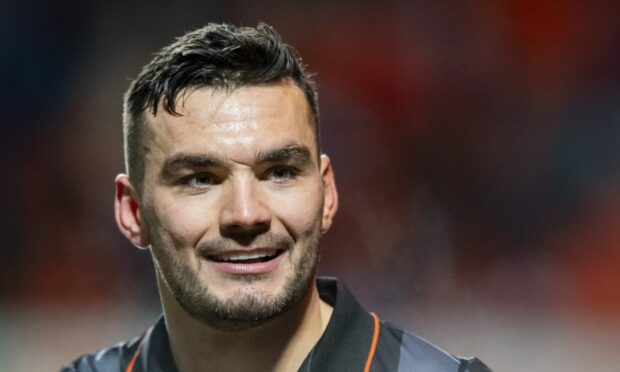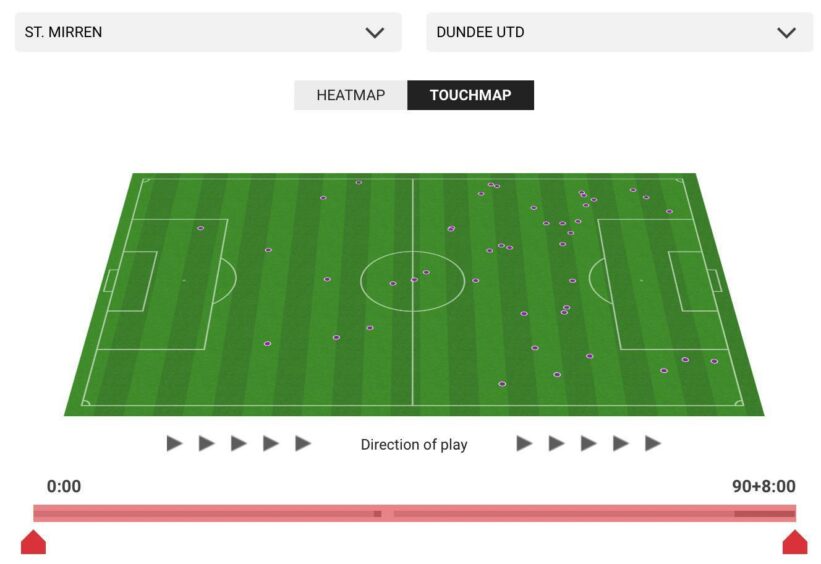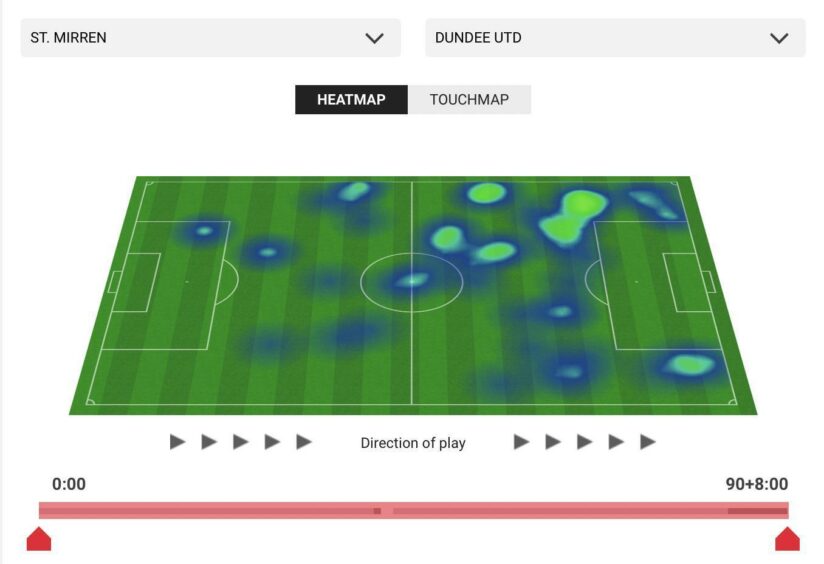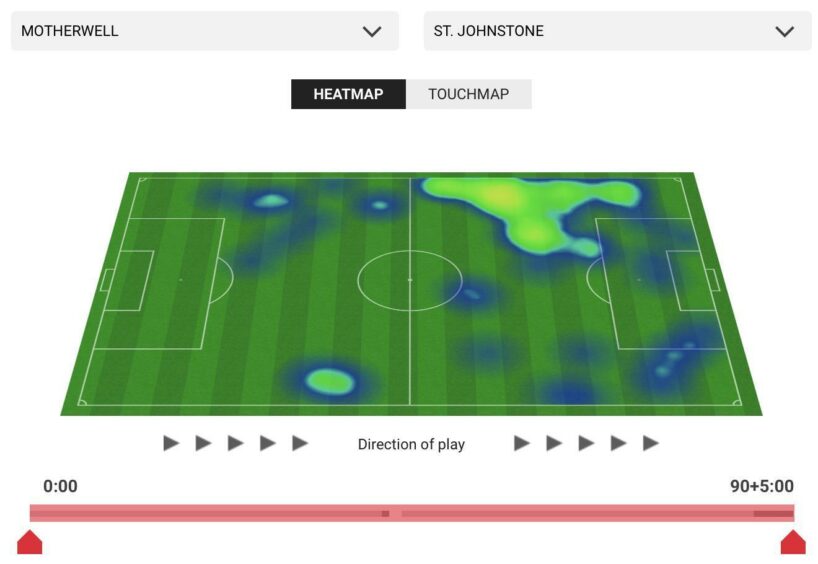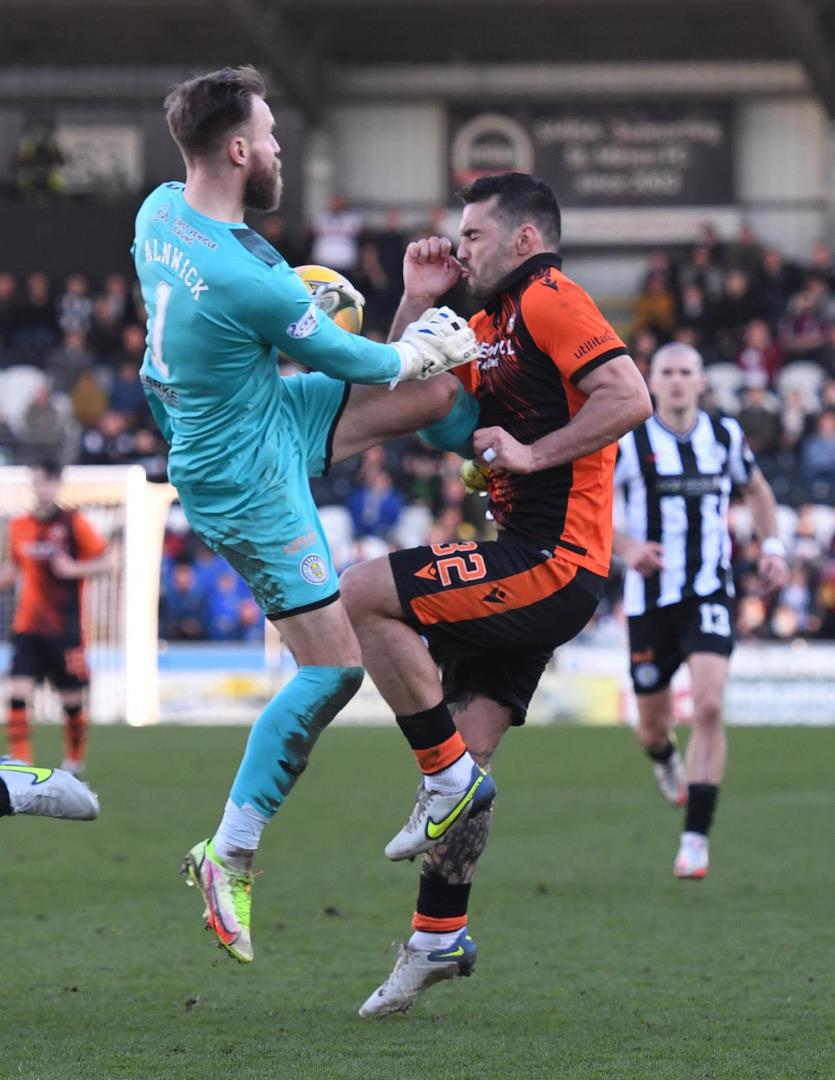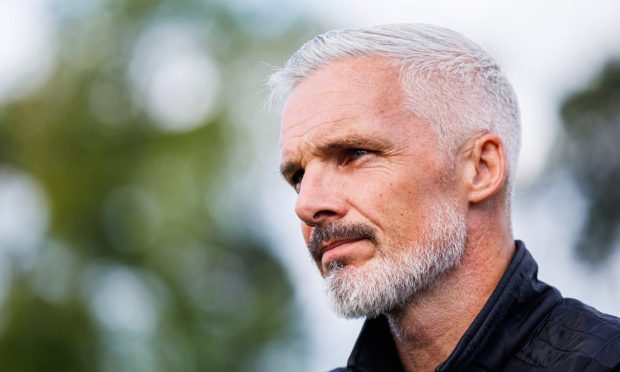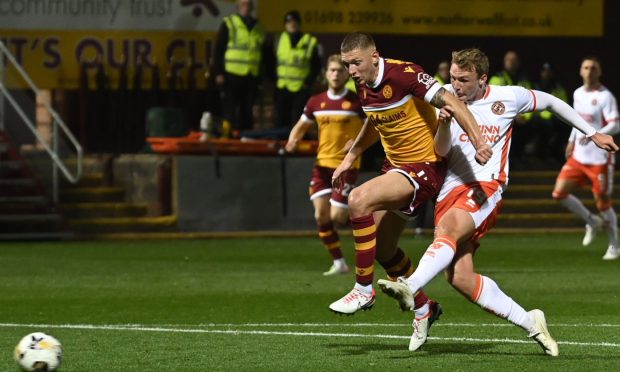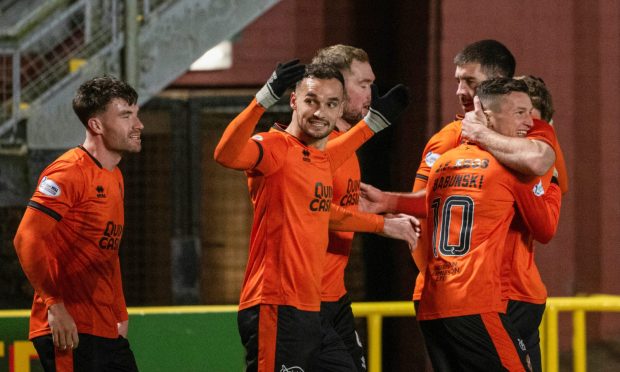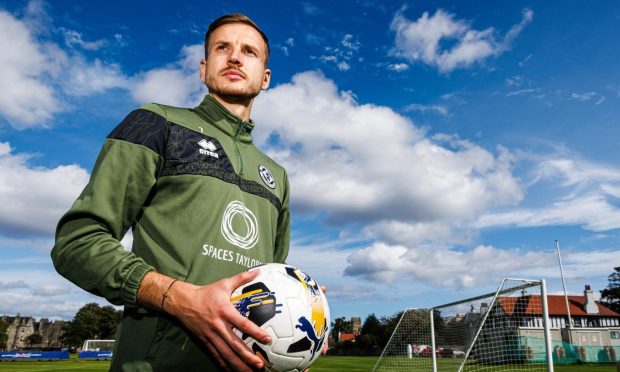Tony Watt failed to find the net against St Mirren.
The Dundee United striker didn’t register a shot, let alone one on target.
He did not have a single touch of the ball in the opposition’s box.
For a forward who arrived at Tannadice as the top scorer in the Premiership following a prolific first half of the campaign with Motherwell, those facts could seem damning.
Nothing could be further from the truth.
Watt’s influence against the Buddies — while operating below 100 per cent, having only just recovered from a muscular injury — stretched well beyond the realms of a predatory front-man.
His performance was outstanding.
A different role cannot be judged solely on goals
Watt is given liberal freedom to roam in this United side, underlined by his heat-map from Saturday.
A tireless showing saw him pop up in central-midfield, both wings and, on occasion, even helping Ilmari Niskanen to create an overload in the left wing-back position.
This is in sharp contrast to how he was utilised at Motherwell, usually on the left side of an orthodox front-three.
The heat-map from his last start for the Steelmen — a 2-0 win over St Johnstone — shows far more focus on the final third, looking to cut inside, play off Kevin van Veen and unleash shots.
It would be unfair to expect the same output from a fundamentally different role.
A creative force
However, a lack of shots should not be mistaken for a lack of attacking impetus.
Through dropping deep and using his nous to find pockets of space, Watt repeatedly collected possession in dangerous areas and sought to make things happen.
The former Celtic marksman made 19 passes in the final third against St Mirren — more than any other player.
For context, Calum Butcher (15) was his nearest challenger.
Only Buddies prospect Jay Henderson and Tangerines loan star Dylan Levitt put in more crosses than Watt’s five.
Beyond the raw numbers, the amount of ground Watt covered, and the regularity with which he held the ball up, was pivotal to the momentum built by United during a swash-buckling second period.
First line of defence
The other benefit of Watt playing in a slightly withdrawn role is it allows him to act as the first line of defence.
Watt won possession seven times, including twice in opposition territory. Only Conor Ronan made more turnovers.
No player was involved in more duels than Watt, level with Ryan Edwards and Joe Shaughnessy on 11. He was never far from the heart of the action.
And while Tam Courts will hope to see the Scotland international back on the scoresheet in the fullness of time, his importance to a properly functioning United side is pivotal, regardless.
